Caméras¶
A camera is an object that provides a means of rendering images from Blender. It defines which portion of a scene is visible in the rendered image.
Cameras are invisible in renders, so they do not have any material or texture settings. However, they do have Object and Editing setting panels available which are displayed when a camera is the active object.
Voir aussi
3D Viewport Camera Navigation for documentation about managing cameras in the viewport.
Propriétés¶
Référence
- Mode
Mode Objet
- Éditeur
Lens¶
Type
The camera lens options control the way 3D objects are represented in a 2D image.
- Perspective
This matches how you view things in the real world. Objects in the distance will appear smaller than objects in the foreground, and parallel lines (such as the rails on a railroad) will appear to converge as they get farther away.
- Focal Length/Field of View
The focal length controls the amount of zoom, i.e. the amount of the scene which is visible all at once. Longer focal lengths result in a smaller FOV (more zoom), while short focal lengths allow you to see more of the scene at once (larger FOV, less zoom).
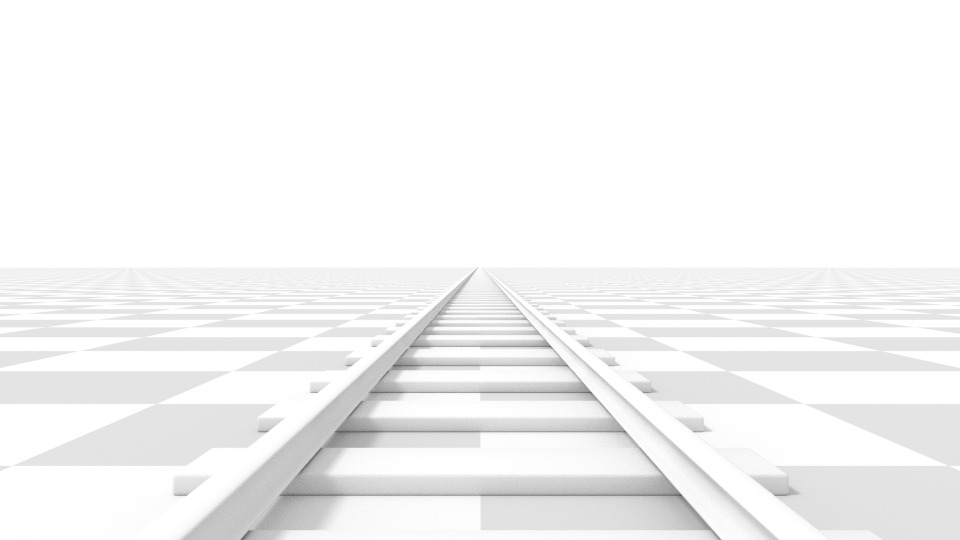
Perspective camera with 35 mm focal length.¶
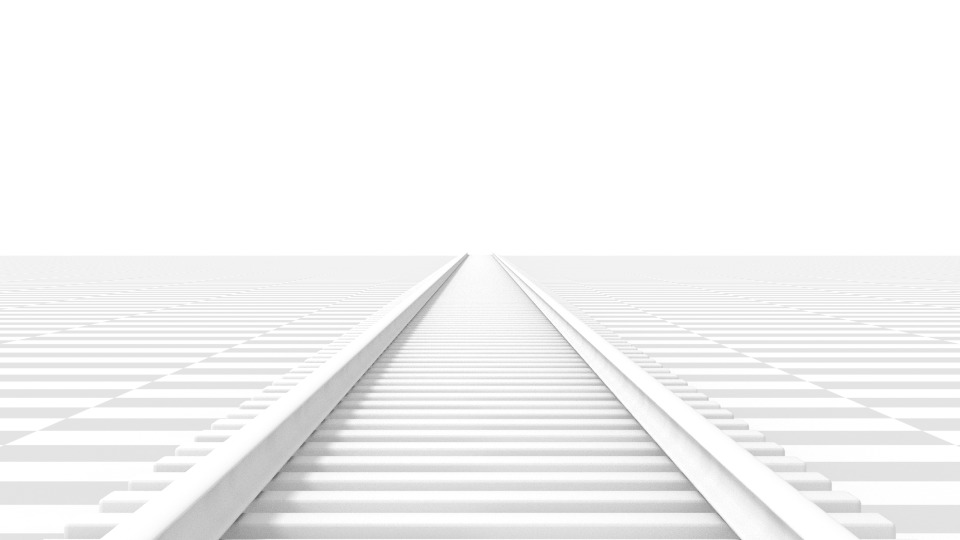
Perspective camera with 210 mm focal length instead of 35 mm.¶
- Lens Unit
The focal length can be set either in terms of millimeters or the actual Field of View as an angle.
Indication
While the camera is moving towards an object the Focal Length property can be decreased to produce a Dolly Zoom camera effect, or vice versa.
This video demonstrates the Dolly Zoom camera effect.
- Orthographic
With Orthographic perspective objects always appear at their actual size, regardless of distance. This means that parallel lines appear parallel, and do not converge like they do with Perspective.
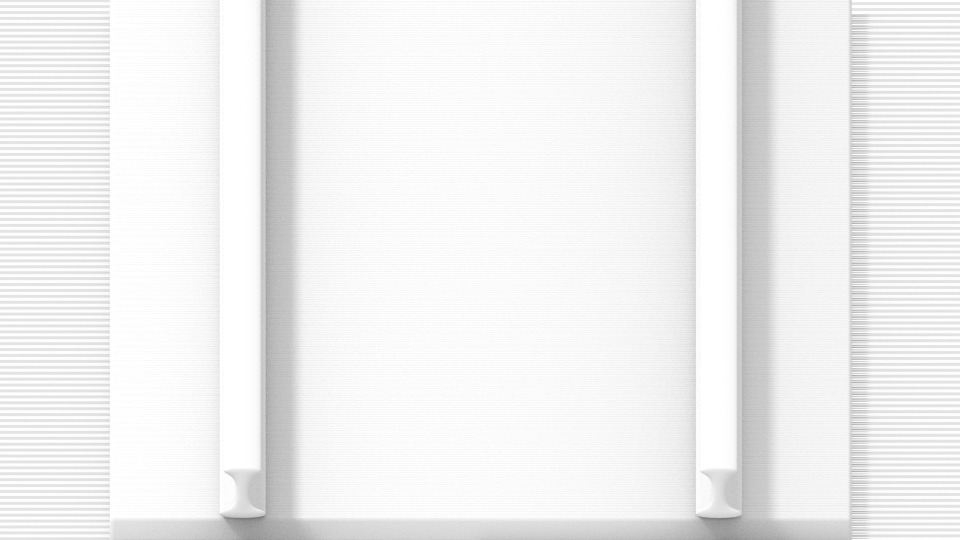
Render from the same camera angle as the previous examples, but with orthographic perspective.¶
- Orthographic Scale
Définit la taille apparente des objets projetés sur l’image.
Note that this is effectively the only setting which applies to orthographic perspective. Since parallel lines do not converge in orthographic mode (no vanishing points), the lens shift settings are equivalent to translating the camera in the 3D Viewport.
- Panoramic
Les caméras panoramiques ne fonctionnent que dans Cycles. Voir les paramètres de la caméra panoramique dans Cycles pour plus d’informations.
- Shift
Allows for the adjustment of vanishing points. Vanishing points refer to the positions to which parallel lines converge. In these render examples, the most obvious vanishing point is at the end of the railroad.

Un lens shift horizontal de 0.330.¶

Rotation de l’objet caméra au lieu d’un lens shift.¶
Notice how the horizontal lines remain perfectly horizontal when using the lens shift, but do get skewed when rotating the camera object.
Note
Using lens shift is equivalent to rendering an image with a larger FOV and cropping it off-center.
- Clip Start and End
The interval in which objects are directly visible, Any objects outside this range still influence the image indirectly, as further light bounces are not clipped.
Note
For viewport rendering, setting clipping distances to limited values is important to ensure sufficient rasterization precision. Ray tracing renders do not suffer from this issue so much, and as such more extreme values can safely be set.
Astuce
When Limits in the Viewport Display panel is enabled, the clip bounds will be visible as two yellow connected dots on the camera’s line of sight.
Voir aussi
Depth of Field (Profondeur de champs)¶
Real-world cameras transmit light through a lens that bends and focuses it onto the sensor. Because of this, objects that are a certain distance away are in focus, but objects in front and behind that are blurred.
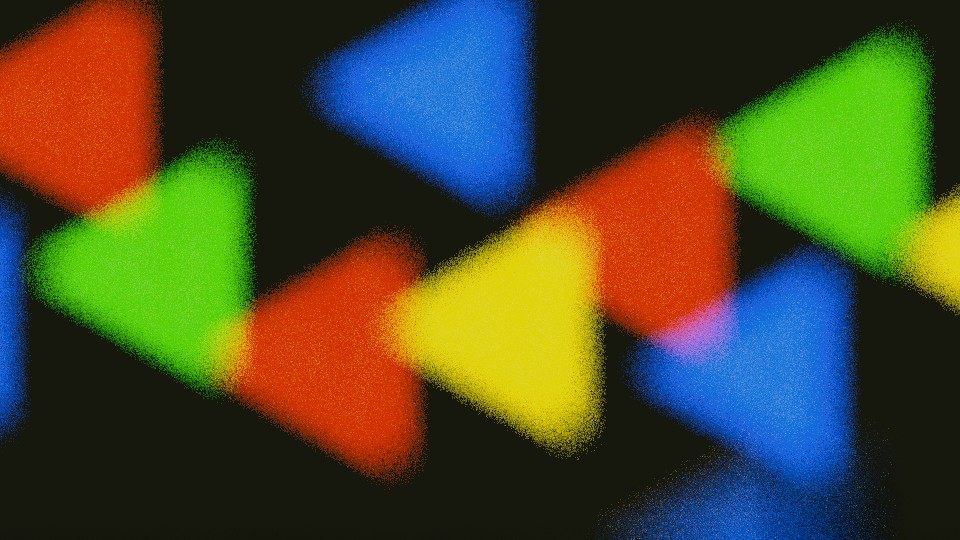
Exemple d’un effet bokeh du DOF.¶
La zone de vision nette est appelée point focal et peut être définie soit par une valeur exacte, soit en utilisant la distance entre la caméra et l’objet choisi :
- Focus Object
Choose an object which will determine the focal point. Linking an object will deactivate the distance parameter.
- Focal Distance
Sets the distance to the focal point when no Focus Object is specified. If Limits are enabled, a yellow cross is shown on the camera line of sight at this distance.
Indication
Hover the mouse over the Distance property and press E to use a special Depth Picker. Then click on a point in the 3D Viewport to sample the distance from that point to the camera.
Aperture¶
- F-Stop
F-Stop ratio that defines the amount of blurring. Lower values give a strong depth of field effect.
- Blades
Total number of polygonal blades used to alter the shape of the blurred objects in the render, and render preview. As with the viewport, the minimum amount of blades to enable the bokeh effect is 3, resulting in a triangular-shaped blur.
- Rotation
Rotate the polygonal blades along the facing axis, and will rotate in a clockwise, and counter-clockwise fashion.
- Ratio
Change the amount of distortion to simulate the anamorphic bokeh effect. A setting of 1.0 shows no distortion, where a number below 1.0 will cause a horizontal distortion, and a higher number will cause a vertical distortion.
Camera¶
- Camera Presets
Préréglages qui correspondent à une caméra réelle.
- Sensor size
This setting is an alternative way to control the focal length, it is useful to match the camera in Blender to a physical camera and lens combination, e.g. for motion tracking.
- Sensor Fit
Option to control which dimension (vertical or horizontal) along which field of view angle fits.
Safe Areas¶
Les zones de sécurité sont des guides pour positionner des éléments afin que les parties les plus importantes du contenu peuvent être vues dans toutes les vues.
Different screens have varying amounts of overscan (especially older TV sets). That means that not all content will be visible to all viewers, since parts of the image surrounding the edges are not shown. To work around this problem TV producers defined two areas where content is guaranteed to be shown: action safe and title safe.
Modern LCD/plasma screens with purely digital signals have no overscan, yet safe areas are still considered best practice and may be legally required for broadcast.
Dans Blender, les zones de sécurité peuvent être définies dans les vues Caméra et Séquenceur.
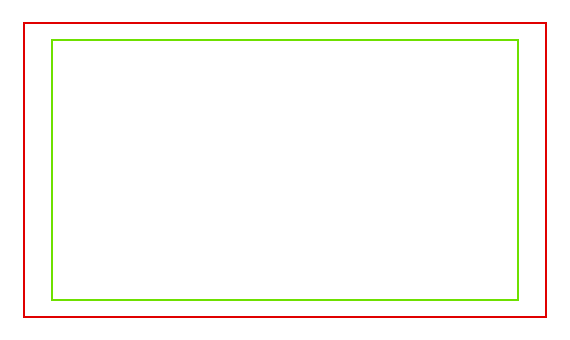
Ligne rouge: Action safe. Ligne verte: Title safe.¶
The Safe Areas can be customized by their outer margin, which is a percentage scale of the area between the center and the render size. Values are shared between the Video Sequence editor and camera view.
- Title Safe Margins X/Y
Also known as Graphics Safe. Place all important information (graphics or text) inside this area to ensure it can be seen by the majority of viewers.
- Action Safe Margins X/Y
Make sure any significant action or characters in the shot are inside this area. This zone also doubles as a sort of « margin » for the screen which can be used to keep elements from piling up against the edges.
Astuce
Each country sets a legal standard for broadcasting. These include, among other things, specific values for safe areas. Blender defaults for safe areas follow the EBU (European Union) standard. Make sure you are using the correct values when working for broadcast to avoid any trouble.
Center-Cut Safe Areas¶
Center-cuts are a second set of safe areas to ensure content
is seen correctly on screens with a different aspect ratio.
Old TV sets receiving 16:9 or 21:9 video will cut off the sides.
Position content inside the center-cut areas to make sure the most important elements
of your composition can still be visible in these screens.
Blender defaults show a 4:3 (square) ratio inside 16:9 (widescreen).
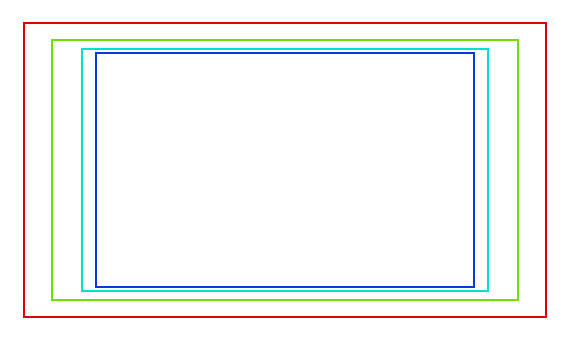
Ligne cyan: action center safe. Ligne bleue: title center safe.¶
Background Images¶
A background picture in your camera can be very helpful in many situations: modeling is obviously one, but it is also useful when painting (e.g. you can have reference pictures of faces when painting textures directly on your model…), or animation (when using a video as background), etc.
- Background Source
C’est la source de l’image d’arrière plan.
- Image
Utiliser une image externe, une séquence d’image, un fichier vidéo ou une texture générée.
- Movie Clip
Utilise un des data-blocks de Movie Clip.
- Alpha
Contrôle la transparence de l’image d’arrière plan.
- Depth
Choisir si une image est affichée ou non derrière tous les objets, ou en avant de tout.
- Frame Method
Définit comment l’image doit être placée dans la vue caméra.
- Stretch
Forc les dimensions de l’image à correspondre aux limites de la caméra (peut changer l’aspect ratio).
- Fit
Réduit les dimensions de l’image pour l’adapter dans la vue caméra sans changer l’aspect ratio.
- Crop
Agrandit l’image afin qu’elle remplisse entièrement la vue caméra sans modifier ses proportions (une partie de l’image sera supprimée).
- Offset X/Y
Positionne l’image d’arrière plan en utilisant ces décalages.
In orthographic views, this is measured in the normal scene units. In the camera view, this is measured relative to the camera bounds (0.1 will offset it by 10% of the view width/height).
- Rotation
Fait pivoter l’image autour de son centre.
- Scale
Agrandit ou rétrécit l’image depuis son centre.
- Flip Horizontally
Retourner l’image , de sorte que le côté gauche est maintenant à droite, et la droite maintenant à gauche.
- Flip Vertically
Retourner l’image , de sorte que la partie supérieure est maintenant en bas, et la partie inférieure maintenant en haut.
Viewport Display¶
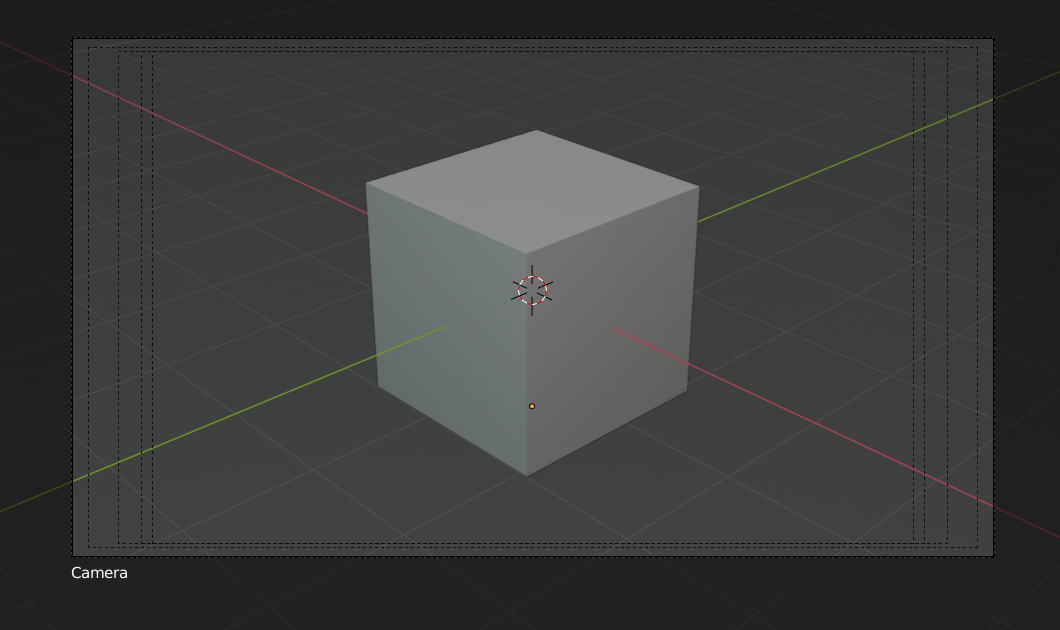
La vue caméra affiche les safe areas, le sensor et le nom.¶
- Size
Size of the camera visualization in the 3D Viewport. This setting has no effect on the render output of a camera. The camera visualization can also be scaled using the standard Scale S transform key.
- Limits
Affiche une ligne qui indique les valeurs de Start et End Clipping.
- Mist
Toggles viewing of the mist limits on and off. The limits are shown as two connected white dots on the camera line of sight. The mist limits and other options are set in the World panel, in the Mist section.
- Sensor
Affiche un cadre en pointillés dans la vue caméra.
- Name
Active ou désactive le nom de la caméra en vue caméra.
Passepartout¶
Cette option assombrit la zone en dehors du champs de vue de la caméra.
- Alpha
Contrôle la transparence du masque passepartout.
Guides de composition¶
Composition Guides enable overlays onto the camera display that can help when framing a shot.
- Center
Ajoute des lignes en divisant en deux le cadre verticalement et horizontalement.
- Center Diagonal
Ajoute des lignes qui connectent les coins opposés.
- Thirds
Ajoute des lignes qui divisent l’image en trois tiers verticalement et horizontalement.
- Golden Ratio
Divise la longueur et la hauteur en proportions du nombre d’or (environ 0.618 de la taille de tous les côtés du cadre).
- Golden Triangle A
Displays a diagonal line from the lower left to upper right corners, then adds perpendicular lines that pass through the top left and bottom right corners.
- Golden Triangle B
Comme A mais avec les coins opposés.
- Harmonious Triangle A
Displays a diagonal line from the lower left to upper right corners, then lines from the top left and bottom right corners to 0.618 the lengths of the opposite side.
- Harmonious Triangle B
Comme A mais avec les coins opposés.